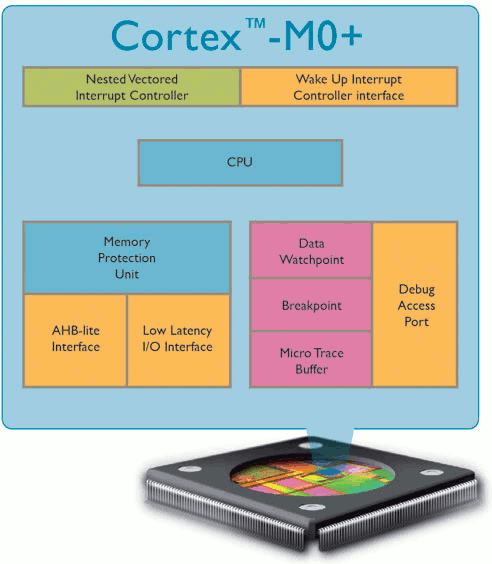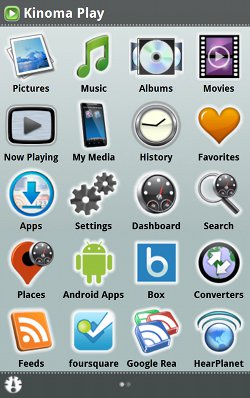Tetsuyuki Kobayashi, working at Kyoto Microcomputer a Japanese development tool vendor, explains how the ADB (Android Debug Bridge) works at Android Builder Summit in February 2012. Abstract: ADB is very nice and important tool. Every Android Builders uses adb command such as ‘adb shell’ and ‘adb logcat’. But what does it mean ‘adb kill-server’ ? I studied the source code of adb. I share you how adb works and some tips I found. This session is for developers who want to know Android internal deeply. You can also download the presentation slides on linuxfoundation.org website. Jean-Luc Aufranc (CNXSoft)Jean-Luc started CNX Software in 2010 as a part-time endeavor, before quitting his job as a software engineering manager, and starting to write daily news, and reviews full time later in 2011. www.cnx-software.com
Using Android Outside the Mobile Phone Space – Android Builder Summit 2012
Jason Kridner, chief software architect for the Sitara ARM microprocessor business at Texas Instruments (TI) and the community development manager, explains why and how to use Android in diverse embedded systems (and not only smartphones and tablets) at the Android Builder Summit in February 2012. Abstract: A few years back all embedded devices were designed like PCs. For example, users understood the use of a mouse and keyboard and could minimize and maximize a window using mouse clicks and launch new applications from Start. The increasing demand and usage of smartphones globally has not just changed the definition of user experience for embedded equipments but has made emerging technologies like touch and display panels, connectivity solutions and infrastructure, affordable to non- phone products segments. The embedded equipment designers and users have grown accustomed in no time to the smartphone features and technologies like multi-touch, high-resolution display panels, connectivity over 3G […]
Designing An Android Sensor Subsystem: Pitfalls and Considerations – Android Builder Summit 2012
Jen Costillo of Lab 126 discusses the Android sensor subsystem at the Android Builder Summit in February 2012. Abstract: This lecture will arm Android device architects with the tactical knowledge they need to navigate the Android Sensor subsystem and make knowledgeable design choices to improve user experience and improve battery performance. The talk will address: Hardware architecture and trade-offs including latency, power, and software architecture implications: Wake up events and power considerations Gesture Detection Algorithm processing location and considerations Testing methodologies (Creating tools to aid develop and collect data. This talk targets the kernel/firmware developer responsible for the sensor architecture. They should be familiar with kernel drivers, embedded systems, hardware bring up, Android services, and the C language. You can also download the presentation slides on linuxfoundation.org website. Jean-Luc Aufranc (CNXSoft)Jean-Luc started CNX Software in 2010 as a part-time endeavor, before quitting his job as a software engineering manager, and […]
The AllJoyn Open Source Project – Android Builder Summit 2012
Marcello Lioy, Director engineering at Qualcomm Innovation Center, talks about AllJoyn open source project at then Android Builder Summit in February 2012: Description of AllJoyn project: AllJoyn is a peer-to-peer technology that enables ad hoc, proximity-based, device-to-device communication without the use of an intermediary server. True peer-to-peer communications without the traditional barriers Simple device and service discovery Security framework for authenticated and encrypted communications per application/service Managed networking and message routing Object-oriented programming model Optimized for the mobile embedded environment Low latency Header compression Reliable and unreliable transport Point-to-multipoint communications Potential applications of the technology include Multi-player gaming Social media sharing Multi-user productivity tools AllJoyn is part of Qualcomm Android development tools. I could not find the presentation slides for this particular talk. Jean-Luc Aufranc (CNXSoft)Jean-Luc started CNX Software in 2010 as a part-time endeavor, before quitting his job as a software engineering manager, and starting to write daily news, and […]
ARM Announces ARM Cortex-M0+ Core to Power the Internet of Things
ARM has just unveiled the ARM Cortex-M0+ 32-bit processor optimized to deliver ultra low-power and low-cost MCUs to power the ‘Internet of Things‘ by controlling connected intelligent sensors and smart control systems in a broad range of applications including home appliances, white goods, medical monitoring, metering, lighting and power and motor control devices. ARM claims the Cortex-M0+ consumes just 9µA/MHz on a low-cost 90nm LP process, around one third of the energy of any 8- or 16-bit processor available today, while delivering significantly higher performance (1.77 CoreMark/MHz). Beside the low power consumption, the main advantage of the Cortex-Mo+ over 8-bit and 16-bit MCUs , is that it can provide low power wireless connectivity to a variety of embedded systems such as wireless sensors. The new processor is based on Cortex-M0 processor but has been redesigned to include a few new features such as: Single-cycle IO to speed access to GPIO […]
Bump In Host on Android – IPv4 to IPv6 Translation – Android Builder Summit
Yonghui Wang, representative of China Mobile to the Linux Foundation, gives a presentation about BIH (Bump in the Host) protocol at the Android Builder Summit in February 2012. Abstract: BIH or Bump-in-the-host realizes a host-based IPv4 to IPv6 protocol translation mechanism that allows a class of IPv4-only applications that work through NATs to communicate with IPv6-only peers on Android. The host on which applications are running may be connected to IPv6-only or dual-stack access networks. BIH hides IPv6 and makes the IPv4-only applications think they are talking with IPv4 peers by local synthesis of IPv4 addresses. China Mobile has released an open source implementation of the protocol. The presentation slides has not available for this talk. Jean-Luc Aufranc (CNXSoft)Jean-Luc started CNX Software in 2010 as a part-time endeavor, before quitting his job as a software engineering manager, and starting to write daily news, and reviews full time later in 2011. […]
Marvell Releases Kinoma Play for Android and Kinoma Create SDK
Marvell has just announced the availability of the preview release of Kinoma Play for Android which includes a suite of 50 apps enabling digital media, social networking, location, and search. It’s somewhat surprising that a silicon vendor releases a processor agnostic software for Android, but here’s the reasoning behind it: “Marvell is investing in our Kinoma software platform because we understand the importance of great software to the success of our customers. Our vision of the Connected Lifestyle guides our product development. Kinoma Play truly shows the power of that Connected Lifestyle,” said Weili Dai, Co-Founder of Marvell. “I believe our customers can now build on Kinoma to bring increased value to their own products. Android is just the first stop. We’re working to bring Kinoma to additional Marvell-powered devices.” Kinoma Play Kinoma Play includes 5 dashboard: Play shows near real-time information from every Kinoma app with news, social networks, […]
Command Line Methods to Completly Delete a Hard Drive in Linux
Here are 2 methods to completly dlete the content of an hard drive with dd and shred commands. With those methods you won’t be able to recover the data. This can be useful in case you want to sell, throw away your hard drive / computer or have doubtful activities. If the partitions you want to delete are system (boot) partitions you’ll need to start your system with a live CD / USB such as SystemRescueCD or GParted. Finding the location of a drive or partition In order to know the exact path for your drive, you can use the fdisk command as root or sudoer: # fdisk -l Disk /dev/sda: 1887.4 GB, 1887436800000 bytes 255 heads, 63 sectors/track, 229467 cylinders Units = cylinders of 16065 * 512 = 8225280 bytes Device Boot Start End Blocks Id System /dev/sda1 1 25 200781 83 Linux /dev/sda2 26 229335 1841932575 83 Linux […]




